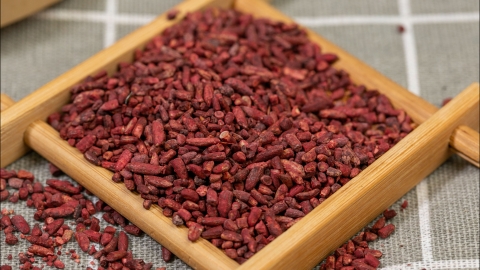What are the functions and effects of red yeast rice?
Red yeast rice is produced by fermenting rice with the mold Monascus purpureus. It typically has various health benefits, including blood-nourishing and anemia prevention, antioxidant and anti-inflammatory effects, blood pressure and lipid reduction, improved glycemic control, spleen-strengthening, and digestion promotion. Specific effects are analyzed as follows:

1. Blood-nourishing and Anemia Prevention
Red yeast rice contains abundant iron and other trace elements that can promote hemoglobin synthesis and enhance the oxygen-carrying capacity of blood, thereby improving symptoms of anemia such as dizziness and fatigue.
2. Antioxidant and Anti-inflammatory Effects
Red yeast rice is rich in various antioxidants, such as flavonoids, anthocyanins, and polyphenolic compounds. These components can eliminate free radicals in the body, reduce oxidative stress, and positively contribute to delaying aging and improving skin health. Additionally, red yeast rice has certain anti-inflammatory effects that help alleviate chronic inflammatory conditions.
3. Blood Pressure and Lipid Reduction
Active ingredients in red yeast rice, such as lovastatin, can inhibit cholesterol synthesis, lower total cholesterol and low-density lipoprotein (LDL) cholesterol levels, while increasing high-density lipoprotein (HDL) cholesterol content. This helps regulate blood lipid levels, reduce the occurrence of atherosclerosis, lower blood pressure and lipid levels, and prevent and treat cardiovascular and cerebrovascular diseases.
4. Improved Glycemic Control
Components in red yeast rice may improve insulin sensitivity to a certain extent and promote glucose utilization, helping to control blood sugar levels, which is particularly beneficial for diabetic patients.
5. Spleen-strengthening and Digestion Promotion
Red yeast rice can strengthen the spleen, stimulate appetite, and enhance digestive function of the spleen and stomach. For symptoms of indigestion, such as abdominal distension and discomfort caused by food stagnation, red yeast rice has certain alleviating effects. The various enzymes it contains can break down nutritional components in food, making them easier for the human body to absorb, thus improving problems such as loss of appetite and indigestion.
Individuals currently taking statin medications should avoid consuming large amounts of red yeast rice simultaneously. Additionally, excessive consumption of red yeast rice may cause side effects such as gastrointestinal discomfort and muscle pain; therefore, it should be consumed in moderation.






